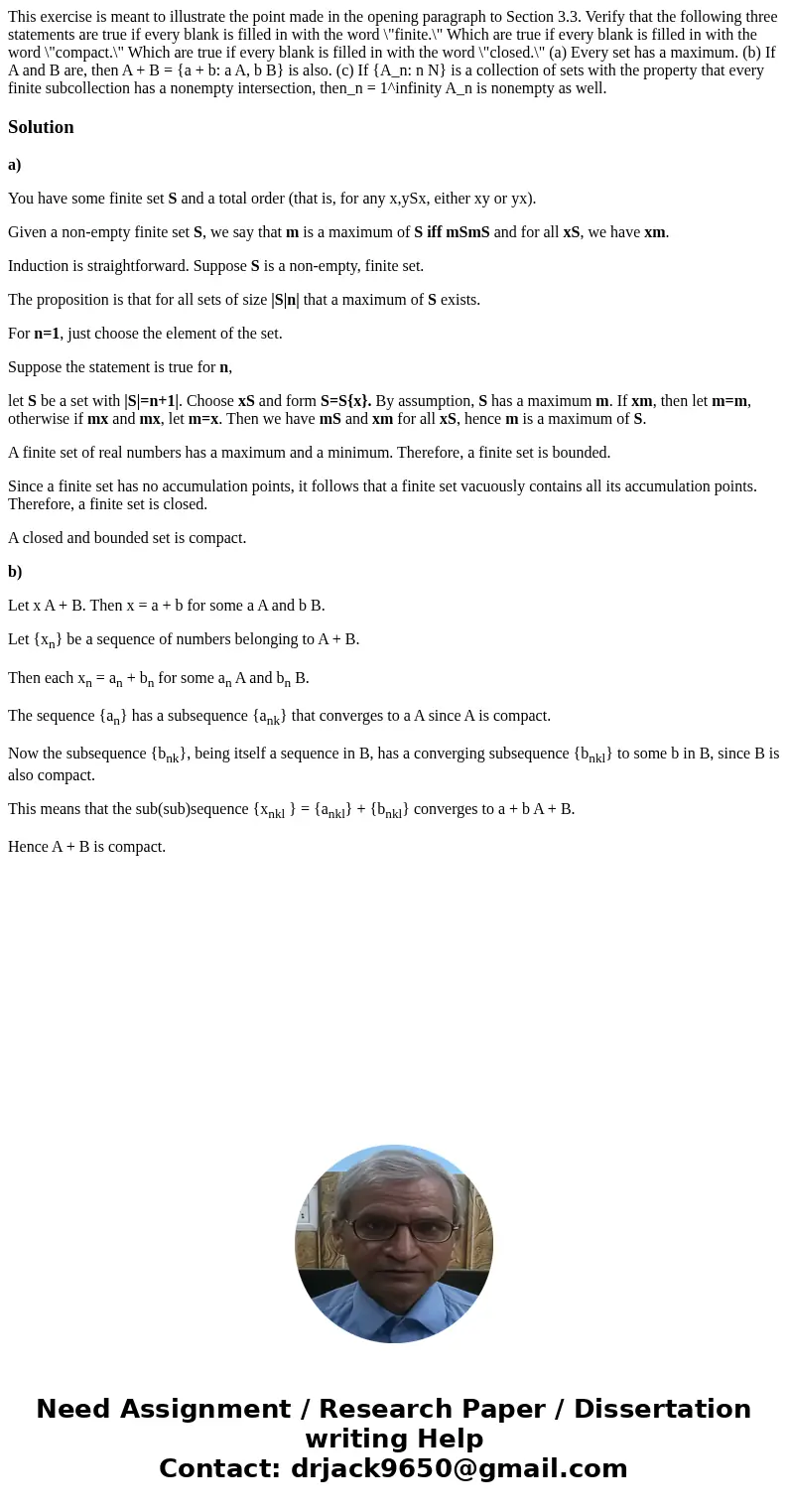This exercise is meant to illustrate the point made in the o
Solution
a)
You have some finite set S and a total order (that is, for any x,ySx, either xy or yx).
Given a non-empty finite set S, we say that m is a maximum of S iff mSmS and for all xS, we have xm.
Induction is straightforward. Suppose S is a non-empty, finite set.
The proposition is that for all sets of size |S|n| that a maximum of S exists.
For n=1, just choose the element of the set.
Suppose the statement is true for n,
let S be a set with |S|=n+1|. Choose xS and form S=S{x}. By assumption, S has a maximum m. If xm, then let m=m, otherwise if mx and mx, let m=x. Then we have mS and xm for all xS, hence m is a maximum of S.
A finite set of real numbers has a maximum and a minimum. Therefore, a finite set is bounded.
Since a finite set has no accumulation points, it follows that a finite set vacuously contains all its accumulation points. Therefore, a finite set is closed.
A closed and bounded set is compact.
b)
Let x A + B. Then x = a + b for some a A and b B.
Let {xn} be a sequence of numbers belonging to A + B.
Then each xn = an + bn for some an A and bn B.
The sequence {an} has a subsequence {ank} that converges to a A since A is compact.
Now the subsequence {bnk}, being itself a sequence in B, has a converging subsequence {bnkl} to some b in B, since B is also compact.
This means that the sub(sub)sequence {xnkl } = {ankl} + {bnkl} converges to a + b A + B.
Hence A + B is compact.

 Homework Sourse
Homework Sourse